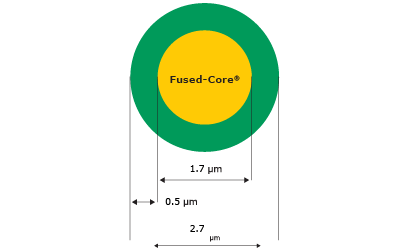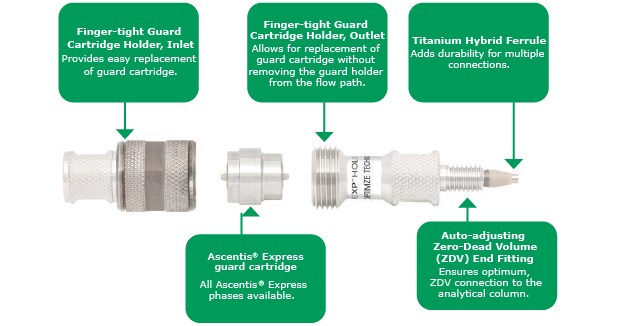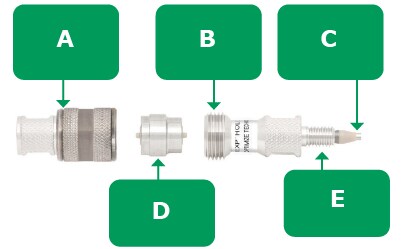Ascentis® Express Peptide ES-C18 U/HPLC Columns
Separation of high molecular weight compounds such as peptides and small proteins
Ascentis® Express Peptide ES-C18 columns were specifically engineered to separate higher molecular weight compounds such as peptides and small proteins. These columns contain advanced Fused-Core® particles that have larger pores (160 Å versus 90 Å in standard Ascentis® Express columns), which greatly expands the application range for Ascentis® Express columns.
Key applications of Ascentis® Express Peptide
ES-C18 columns:
• Pharmaceutical/therapeutic peptide separation
• Peptide mapping
• Natural and synthetic peptide analysis
• Oligonucleotide analysis
Key benefits of Ascentis® Express Peptide
ES-C18 columns:
- Higher peak capacity providing greater resolution
- Exceptional ruggedness providing long column
Ascentis® Express Peptide ES-C18 HPLC columns use a steric-protected C18 bonded-phase with extremely high resistance to acid-catalyzed hydrolysis of the siloxane bond that attaches the C18 chain to the surface. Thus, the column tolerates the combination of low pH and elevated temperature well.
Pharmaceutical Peptides
Many peptides have been investigated as therapeutic pharmaceutical drugs and are active vasodilators, vasoconstrictors, hormones, and neuropeptides. Using reversed-phase HPLC, it is possible to solve the tasks of identification, purity monitoring, and quantitative analysis in many cases, including those where the application of other methods is impossible.
Synthetic Peptide Analysis
The difficulty with synthetic peptides involves the production of many “deletion variants”. A deletion may occur at any point in the peptide synthesis and so several versions of the peptide are produced which are absent one, two or three amino acids from the desired product. This makes for an interesting chromatographic problem because the resultant peptide mix contains peptides that are very similar in structure.
Peptide Mapping
Protein analysis and characterization has become more crucial due to many biopharmaceutical advances. Peptide mapping via LC-MS is one such technique that is commonly used today. A typical procedure involves the preparation of a tryptic digest from the protein, with subsequent characterization using reversed-phase, gradient HPLC separation followed by mass spectral analysis and database search.
Related Resources
Related Applications
- Peptide Mapping LC-MS/MS Analysis Workflow for Adalimumab
- Three Methods for Critical Quality Attribute Determination of Monoclonal Antibodies
Ascentis® Express Peptide ES-C18 is a high-speed, high-performance liquid chromatography column based on a superficially porous Fused-Core® particle design. The Fused-Core® particle provides a thin porous shell of high-purity silica surrounding a solid silica core. This particle design exhibits very high column efficiency due to the shallow diffusion paths.

2.7 µm particlesFast HPLC on ANY System A practical solution that delivers UHPLC performance from any HPLC.
Related Products
Ascentis® Express Peptide ES-C18, 2.7 μm HPLC Column
Ascentis® Express 160 Å C30 Guard columns
Ascentis® Express 160 Å Peptide ES-C18 Guard columns (3 per pack)

Ascentis® Express Guard Cartridge Holder

Ascentis® Express Peptide ES-C18, 2.7 μm Capillary HPLC Column
BIOshell™ A160 Peptide C18, 2.7 μm HPLC Column
Ascentis® Express 160 Å Peptide ES-C18 Guard columns (3 per pack)
To continue reading please sign in or create an account.
Don't Have An Account?